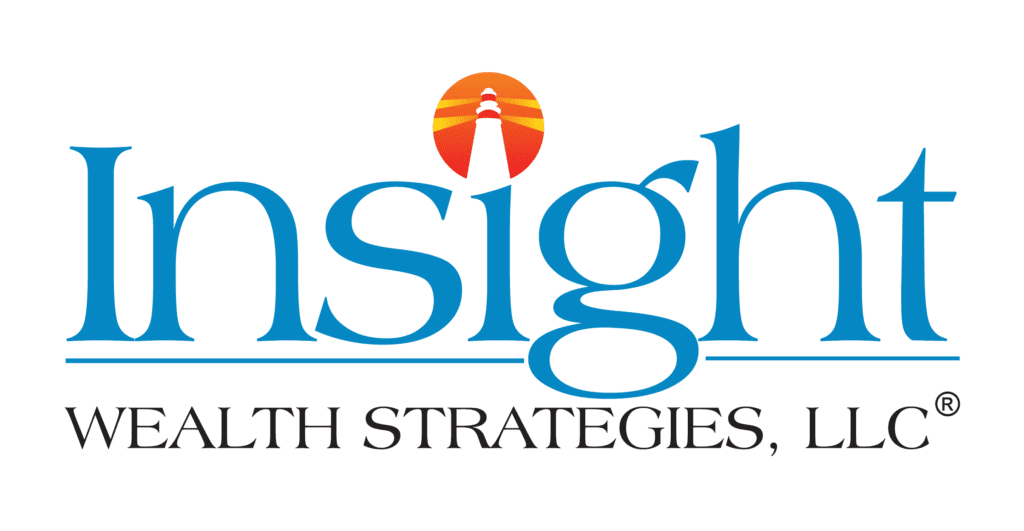Navigating the Costs of Aging at Home vs.
Senior Living Communities
Table of Contents
For many families, the core question isn’t whether care will be needed—it’s where and how to pay for it. Broadly, you’re weighing two paths: (1) aging in place with in-home support or (2) moving to a senior living community (independent living, assisted living, or—when medically necessary—a nursing home). The “right” answer depends on care needs, lifestyle preferences, family support, and finances. Below we compare typical costs, what insurance (especially Medicare) does and doesn’t cover, and how planning ahead can keep options open.
What the Cost Data Says
- Home care (non-medical “homemaker” help): National median $33/hour (2024)1.
Home health aide (hands-on personal care): $34/hour (2024)1.
- Assisted living (monthly): National median $5,900/month (2024)1.
- Nursing home (monthly): National medians $9,277 (semi-private) and $10,646 (private) in 2024; a private room equates to about $127,750/year1.
- Independent living (monthly): Typical average ~$3,000/month nationally (2024). Actual pricing varies widely by region, amenities, and apartment size2.
Where these figures come from: the widely cited Genworth/CareScout Cost of Care Survey 2024 and provider-reported averages for independent living.
What Medicare Covers (and Doesn’t)
A key driver of out-of-pocket costs is coverage. Medicare doesn’t pay for long-term custodial care (help with activities of daily living such as bathing, dressing, or meal prep), whether delivered at home or in assisted living3. Medicare may cover short-term skilled nursing or home health following a hospitalization when specific criteria are met, but not ongoing personal care. Plan with the expectation that long-term care is largely private-pay unless you qualify for Medicaid.
Quick Comparison: Cost Drivers & Trade-Offs
Aging in Place (Home Care)
- Who it fits: Those with light-to-moderate help needs, strong desire to stay home, and either nearby family support or budget for care coordination.
- Cost drivers: Hours per day, days per week, level of care needed, agency rates, and add-ons (transportation, meal services).
- Ballpark:
- 20 hrs/week of aide support ≈ 86 hrs/month × ~$34 ≈ $2,900–$3,100/month1.
- 44 hrs/week (a common benchmark) ≈ ~$6,000+/month1.
- 24/7 care is typically more expensive than assisted living or even nursing homes.
- Extras to budget: Safety/home modifications, medical alert devices, care management, and respite for family caregivers (costs vary by market; plan for a buffer).
- Pros: Familiar surroundings; potentially lower cost at lower care levels; flexible scheduling; often better continuity with local physicians.
- Cons: Costs can escalate quickly as needs rise; coordination burden on family; social isolation risk; home upkeep remains.
Senior Living Communities
- Independent living (~$3,000/month avg.)2: For active older adults needing convenience (meals/housekeeping/social life), not hands-on personal care.
- Assisted living (median ~$5,900/month)1: Includes housing, meals, housekeeping, activities, and help with ADLs; pricing often tiers up with care needs.
- Memory care: Typically a premium above assisted living due to staffing and security (varies by market).
- Skilled nursing (nursing homes): Highest level of 24/7 medical oversight; median $9,277–$10,646/month1.
- Pros: Predictable bundled services; built-in social environment; safety features; staff available 24/7 (assisted living/nursing).
- Cons: Less individualized routine than home; fees can increase with higher care levels; potential move-in/community fees; Medicare still doesn’t cover custodial AL/memory care.
Cost Math Families Often Miss
One of the most common surprises for families is how quickly in-home care costs can climb. Many people start with a few hours of help each week at home, which feels affordable, but as needs grow, the expenses can quickly rival or exceed the cost of assisted living. At around 44 hours a week, a common threshold for someone needing daily personal care, the total monthly cost for home care often matches a mid-range assisted living community, and that’s without including housing, utilities, meals, and activities that communities bundle into their base fees.
Another factor is the “bundling” advantage of senior living. In a community, the monthly rate usually includes multiple services—rent, meals, housekeeping, transportation, and activities—that must be arranged and paid for separately if a person stays at home. Families also sometimes overestimate how much Medicare will offset long-term care costs. Medicare can help cover skilled nursing or home health services following a hospitalization, but it doesn’t pay for ongoing custodial care, whether at home or in assisted living. Finally, regional cost differences can be dramatic. In high-cost-of-living areas, both in-home care and community living can run 20% to 50% higher than national medians, making local research essential to building an accurate budget.
A Practical Framework to Decide
1) Clarify care needs now—and likely 12–24 months out.
List Activities of Daily Living (ADLs) such as bathing, dressing, toileting, transferring, continence or eating, and Instrumental Activities of Daily Living (IADLs) like medication management, shopping, cooking, finances and transportation. If the needs are limited to IADLs and social connection, independent living or part-time home help may be sufficient. If two or more ADLs require daily assistance, assisted living or substantial home-care hours may be a more appropriate option.
2) Price your local options side-by-side.
- Get two home-care agency quotes (hourly minimums, weekend/overnight rates).
- Price assisted living communities on an apples-to-apples basis: base rent, level-of-care fees, medication management, plus any community/move-in fees.
- For higher medical needs, add nursing home quotes to understand the ceiling of potential costs.
3) Stress-test the budget.
- Run scenarios where needs increase 25–50% (e.g., from 20 to 40 hours/week of home care.)
- Project costs 3–5 years out, recognizing 2024 saw 5–10%+ price increases across many care types.
4) Align coverage and cash-flow tools.
- Medicare: Great for medical events; not a long-term custodial care payer3.
- Long-Term Care (LTC) insurance: If you have it, confirm daily/monthly benefit, elimination period, and how benefits apply to home care vs. assisted living vs. nursing.
- Health Savings Accounts (HSAs): May help with some qualified expenses in retirement.
- Portfolio planning: Coordinate withdrawals, taxes, and risk—so care spending doesn’t derail your broader goals.
5) Consider quality-of-life “soft costs.”
Social connection, activities, and relief for family caregivers matter. A community can reduce loneliness and caregiver burnout; staying home may preserve routines and neighborhood ties. There’s no one “right” answer—only what fits you and your families needs and values sustainably.
Side-by-Side Snapshot
- Total monthly outlay
- Home (light needs): A few hours/day can be <$3,000/month (plus housing, utilities, food).
- Assisted living: ~$5,900/month median (bundled living, meals, basic ADL help)1.
- When needs increase
- Home: Costs scale linearly with hours; nights/weekends add premiums.
- Assisted living: Care tiers raise fees but remain bundled.
- Highest medical need
- Home: 24/7 care is generally most expensive route.
- Facility: Nursing home $9,277–$10,646/month median1.
- Intangibles
- Home: Familiarity, autonomy and a potential heavier coordination burden on family.
- Community: Built-in social life, activities, and 24/7 staff access.
How Financial Planning Helps
- Cash-flow mapping: Match care paths to sustainable withdrawal rates, Social Security, pensions, and RMDs.
- Tax-aware funding: Sequence taxable, tax-deferred, and Roth withdrawals; evaluate qualified LTC insurance premiums and potential medical expense deductions when applicable.
- Risk management: Review LTC insurance, riders on life/annuity contracts, and self-funding strategies.
- Contingency planning: Pre-plan “trigger points” for when rising needs make a community setting more cost-effective (or vice versa).
Bottom Line
If help needs are light and family support is strong, aging at home with part-time assistance can be both cost-effective and emotionally fulfilling. As daily hands-on needs increase, assisted living often provides a more predictable bundle of services and social connection, sometimes at a lower total cost than arranging 12–24 hours a day of home care. For those with complex medical needs, nursing homes deliver the highest level of support—but also come with the highest median costs. The key is to plan early, budget realistically, and revisit your options each year so that decisions are made based on preference rather than urgency. At Insight Wealth Strategies, we can help you compare scenarios, model future costs, and build a plan that balances quality of life, financial security, and peace of mind for you and your family.
Reviewed by,

Brian Stormont, CFP®
Brian Stormont is a comprehensive, fee-only financial advisor with Insight Wealth Strategies who began his career in the financial industry in 2000. His expertise encompasses retirement planning, investment planning, estate planning, and high-level strategies to help business owners and individuals minimize their income taxes.
Sources:
- https://www.carescout.com/cost-of-care
- https://www.assistedliving.org/
- https://www.medicare.gov/coverage/long-term-care
Insight Wealth Strategies, LLC is a Registered Investment Adviser. Advisory services are only offered to clients or prospective clients where Insight Wealth Strategies, LLC and its representatives are properly licensed or exempt from licensure. Past performance is no guarantee of future returns. Investing involves risk and possible loss of principal capital. No advice may be rendered by Insight Wealth Strategies, LLC unless a client service agreement is in place.
Insight Wealth Strategies, LLC (IWS) and its affiliates do not provide tax, legal or accounting advice. This material has been prepared for informational purposes only, and is not intended to provide, and should not be relied on for, tax, legal or accounting advice. You should consult your own tax, legal and accounting advisors before engaging in any transaction.
Certified Financial Planner Board of Standards Inc. owns the certification marks CFP®, CERTIFIED FINANCIAL PLANNER™, in the U.S., which it awards to individuals who successfully complete CFP Board’s initial and ongoing certification requirements.

